Morning Eye Candy: Season’s Symmetry
Posted in Photography on December 24 2014, by Matt Newman

In the Forest – Photo by Ivo M. Vermeulen

Inside The New York Botanical Garden
Posted in Photography on December 24 2014, by Matt Newman

In the Forest – Photo by Ivo M. Vermeulen
Posted in Around the Garden on December 22 2014, by Matt Newman
The winter solstice having come and gone, there are nonetheless a few autumn holdouts still boasting their color around the Garden.
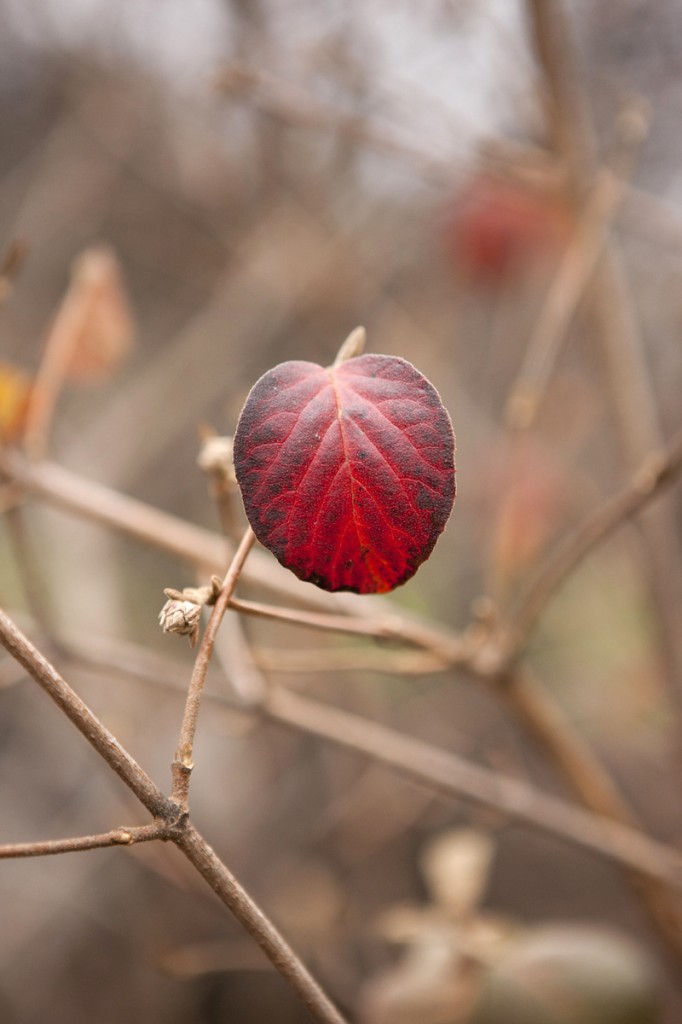
In the Ross Conifer Arboretum – Photo by Ivo M. Vermeulen
Posted in Horticulture on December 16 2014, by Sonia Uyterhoeven
Sonia Uyterhoeven is NYBG‘s Gardener for Public Education.
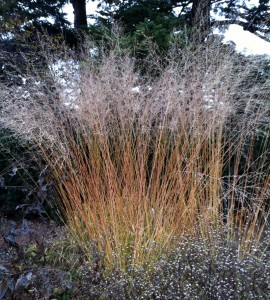
While most of the Garden is being put to bed, our Seasonal Walk—designed by Piet Oudolf—is still putting on a notable display as the winter approaches. This is thanks to Oudolf’s naturalistic design which incorporates many plants that senesce well and provide interest even after they’ve passed their seasonal prime.
A week or two ago I was working on the Seasonal Walk, tidying up the border with my colleague, Katie Bronson, and we were admiring some of the sturdier perennials that still looked good even into December. One of the most striking features of the Walk at the onset of the hibernal months is the tall purple moor grass (Molinia caerulea ssp. arundinacea ‘Transparent’). This grass played an important role earlier in the season as it shot up to nearly six feet, towering over many of its neighboring perennial brethren. ‘Transparent’ has airy flowers with an open habit and long-lasting seedheads.
The stems of ‘Transparent’ turn into a vision of glowing embers late in the season, when they take on golden, orange, and raspberry hues. Those of you with a watchful eye may have noticed as you strolled down the border that some of the stems on certain grasses were upright, sturdy, and colorful, while other, similar grasses looked somewhat worse for wear and had only golden yellow stems. Katie told me that along with ‘Transparent’, some tall more grass (Molinia arundinacea ‘Skyracer’) had been planted. Presumably these plants will be removed in the spring and replaced with more ‘Transparent’. It was difficult to distinguish the two during the growing season, but their disparities became apparent in the fall.
Posted in Horticulture on December 3 2014, by Sonia Uyterhoeven
Sonia Uyterhoeven is NYBG‘s Gardener for Public Education.
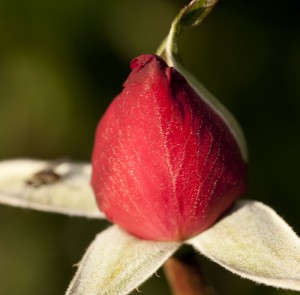 With Thanksgiving and the season’s first snow behind us, the reality of winter is now upon us. At this time of year the rose garden is closed to the public, but the gardeners are still busy working. Fall clean-up is important!
With Thanksgiving and the season’s first snow behind us, the reality of winter is now upon us. At this time of year the rose garden is closed to the public, but the gardeners are still busy working. Fall clean-up is important!
As every rose gardener knows, the queen of flowers is particularly susceptible to black spot. The spores of the fungus will happily over-winter in the soil around your roses. It is paramount to clean up all the diseased foliage and be meticulous about keeping the area around the rose clean.
Once our roses start to go dormant for the winter and the ground starts to cool, we surround the base of the plants with mulch. The mulch acts like a winter Parka, protecting the base of the rose during the cold winter months. We use a finely shredded bark mulch that doesn’t get matted down into large clumps. “Hilling” or mounding mulch around the base of our roses to a depth of 6 to 8 inches provides ample protection during the cold winter months.
Posted in Photography on March 19 2014, by Matt Newman
The Ladies’ Border shows immeasurable spring promise right now, what with these fuzzy wonders just beginning their bloom. It’s often referred to as oriental paperbush, though I personally prefer the alternate: “Mitsumata.” It’s one of the plant species used in the making of the Japanese tissue paper of the same name.
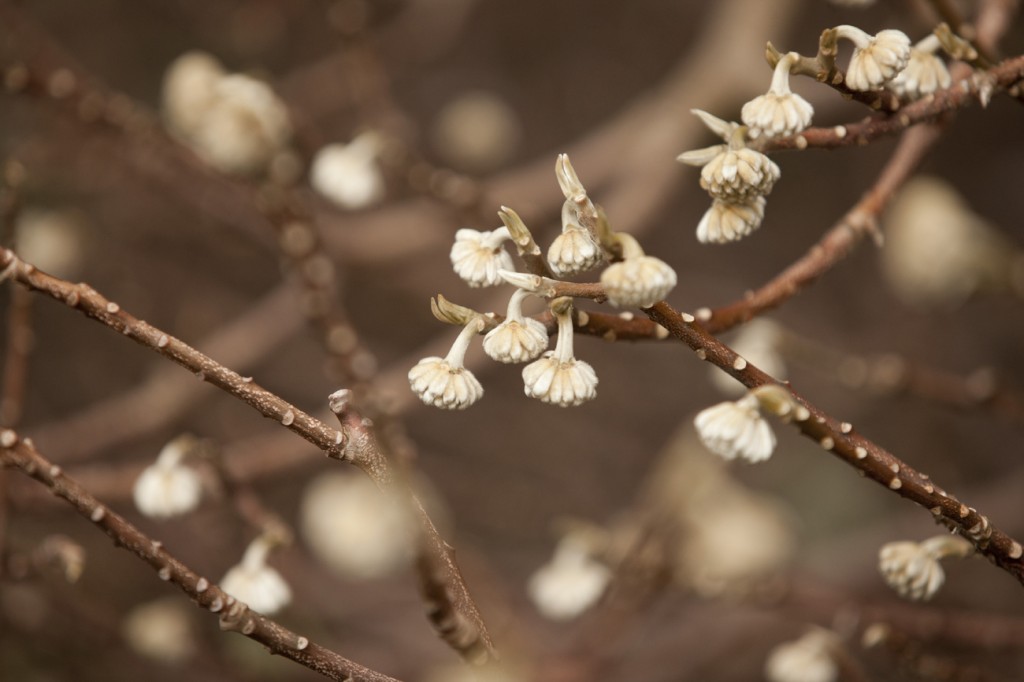
Edgeworthia chrysantha in the Ladies’ Border – Photo by Ivo M. Vermeulen
Posted in Photography on March 18 2014, by Matt Newman
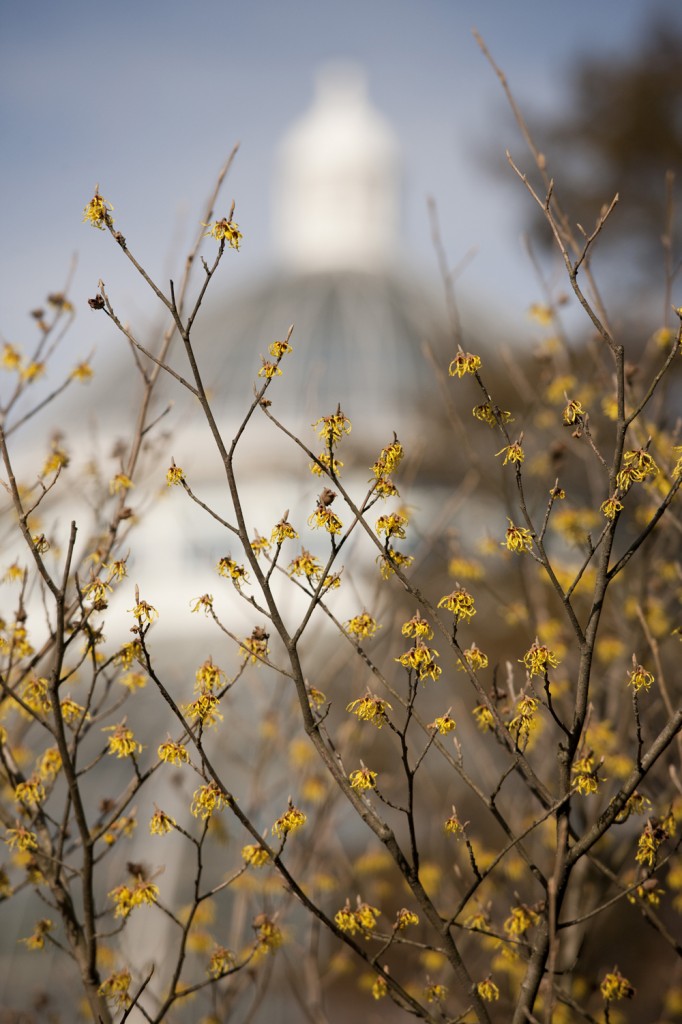
Witch-hazel (Hamamelis) in the Perennial Garden – Photo by Ivo M. Vermeulen
Posted in Photography on March 17 2014, by Matt Newman
Happy St. Pat’s from every green flower we can muster here at the NYBG! It’s no four-leafed clover, but this Cymbidium has a lucky green hue down pat. Find more on our Instagram feed as we make our way through this year’s Orchid Show: Key West Contemporary, and if you’re headed out tonight, remember: moderation in all things!
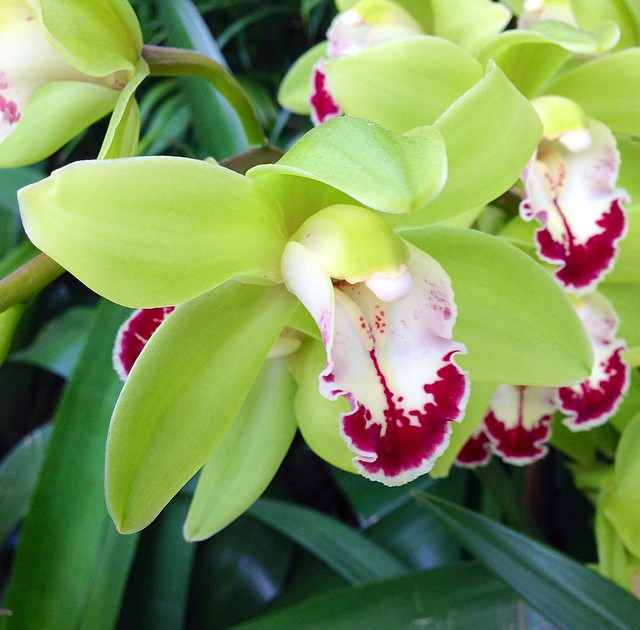
Cymbidium King Arthur ‘Green Giant’ in the Enid A. Haupt Conservatory
Posted in Photography on March 15 2014, by Lansing Moore
The crocus is a real early bird, one of the first to bloom when winter is at its end. Paired with the snowdrops we have already seen, it’s a good sign.
Crocus in the Seasonal Walk – Photo by Ivo M. Vermeulen
Posted in Horticulture on March 14 2014, by Kristin Schleiter
Kristin Schleiter is the NYBG’s Associate Vice President of Outdoor Gardens and Senior Curator. She oversees the wonderful gardening team that keeps our flowering gardens looking topnotch, curates the herbaceous gardens and collections, and manages the curator of woody plants. She lives and gardens in Fairfield, CT.
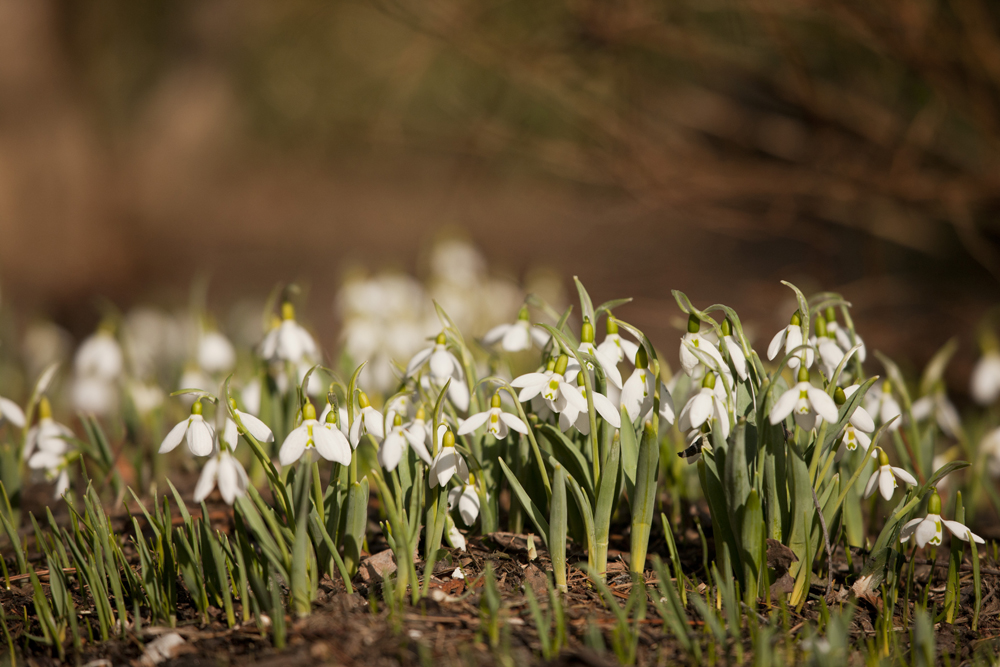
Every February, I can be found on my knees in the Garden poking and prodding and looking for signs that my beloved snowdrops are coming up to signal the beginning of spring. Pushing aside the snow, I see small green noses forcing their way up for a whiff of warm air. Even a single sunny day can bring forth elegant white blossoms which have a lovely honey scent. The spring’s earliest snowdrops, Galanthus elwesii, are blooming now in the Perennial and Azalea Gardens. Their glaucous blue foliage and large flowers create a much nicer drift of white.
Posted in Photography on March 14 2014, by Matt Newman
Keep an eye out for Darwin’s famed star orchid when you visit Orchid Evenings this weekend. You might even be able to make out the feature that made this bloom such an evolutionary puzzle for decades on end.
Darwin’s Star Orchid (Angraecum sesquipedale) in the Conservatory – Photo by Ivo M. Vermeulen